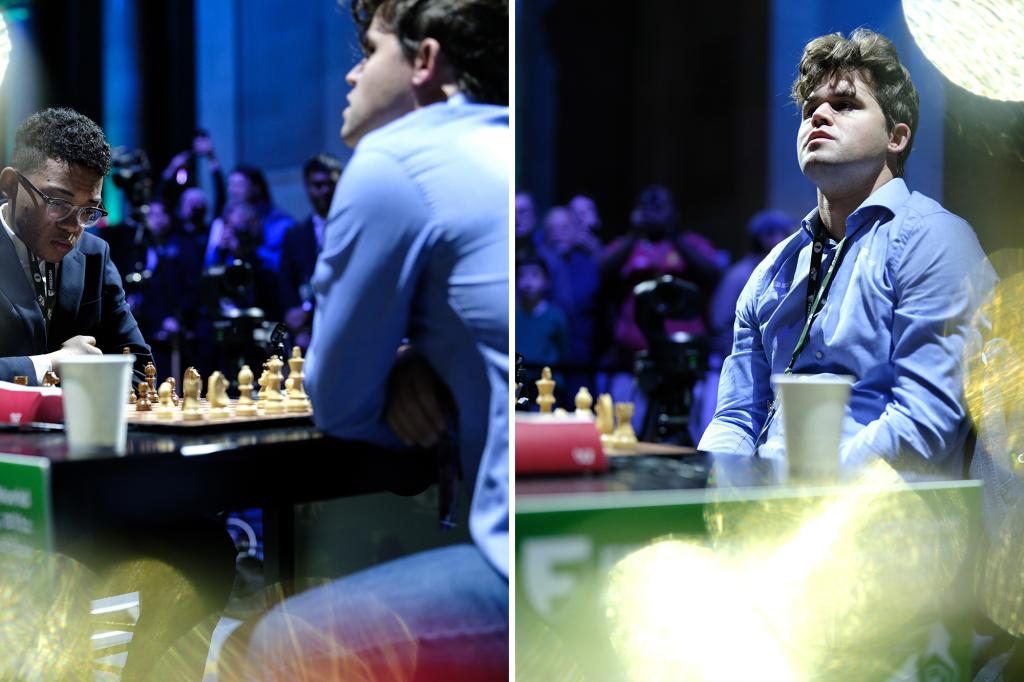The Denim Debacle: Magnus Carlsen’s Stand Against Chess Fashion Regulations
The world of chess was recently rocked by a sartorial standoff involving none other than its reigning champion, Magnus Carlsen. The Norwegian grandmaster, known for his tactical brilliance and unflappable demeanor, found himself embroiled in a dispute over his choice of attire at the World Rapid Championship in New York. His transgression? Wearing jeans, a garment deemed unsuitable for the hallowed halls of competitive chess by the International Chess Federation (FIDE). This seemingly trivial matter escalated into a full-blown controversy, culminating in Carlsen’s withdrawal from not only the Rapid Championship but also the subsequent Blitz Chess Championships. The incident sparked debate about the relevance and enforcement of dress codes in a sport often associated with intellectual prowess rather than fashion statements.
The clash began when Carlsen arrived at the tournament venue, inadvertently clad in denim trousers. Unbeknownst to him, this sartorial choice contravened FIDE’s dress code, which stipulates a more formal standard of attire for participants. The chief arbiter, upholding the regulations, levied a $200 fine on Carlsen and requested that he change into more appropriate clothing. While the fine itself was not a significant deterrent for a player of Carlsen’s stature, the subsequent demand to immediately change his attire proved to be the tipping point. Carlsen, feeling the principle of the matter was at stake, refused to comply, leading to his exclusion from the ninth round of the tournament. While he could have returned for subsequent rounds after changing his attire, Carlsen chose to stand his ground, withdrawing from the Rapid Championship altogether and, in a further show of defiance, also pulling out of the Blitz Chess Championships.
Carlsen’s decision to withdraw was met with mixed reactions from the chess community. Some lauded his commitment to his principles, while others criticized his seemingly over-the-top reaction to a relatively minor infraction. Supporters of Carlsen argued that the dress code was archaic and irrelevant to the intellectual nature of chess. They pointed out that the focus should be on players’ skills and strategic thinking, not on their clothing choices. Furthermore, they questioned the practicality of enforcing such a strict dress code, particularly in a fast-paced tournament environment. Critics, on the other hand, argued that Carlsen’s actions were disrespectful to the organizers and fellow competitors. They emphasized the importance of adhering to established rules and regulations, regardless of personal preferences. They also pointed out that Carlsen, as a prominent figure in the chess world, had a responsibility to set a positive example for younger players.
The incident also brought to light the broader issue of dress codes in sports and other competitive arenas. While some argue that dress codes promote professionalism and equality, others view them as unnecessary restrictions on personal expression. The debate extends beyond the world of chess, encompassing various sports and professions. For instance, in tennis, there have been controversies over players’ attire, with some arguing that certain outfits are too revealing or distracting. Similarly, in many workplaces, dress codes are implemented to maintain a professional image and ensure safety. However, there are ongoing discussions about the appropriateness and flexibility of such codes in the modern era.
Carlsen’s explanation of the situation sheds further light on his perspective. He claimed that he had been at a lunch meeting earlier in the day and had rushed back to the tournament venue, hastily changing his clothes without giving much thought to the dress code. He admitted to changing his shirt, jacket, and even shoes, but the jeans, a seemingly innocuous item of clothing, slipped his mind. He expressed his willingness to comply with the dress code the following day, but the insistence on immediate compliance irked him, turning the matter into a point of principle. He felt that the organizers’ inflexible stance was unreasonable and unwarranted, particularly given his stature and contributions to the sport.
FIDE, for its part, defended its dress code, emphasizing its aim to maintain professionalism and fairness in the competition. They stated that the decision to penalize Carlsen was made impartially and in accordance with the established regulations. They also pointed out that another player, Ian Nepomniachtchi, had been fined for wearing sports shoes, demonstrating that the enforcement of the dress code was not targeted at Carlsen specifically. Nepomniachtchi, unlike Carlsen, complied with the request to change his footwear and continued participating in the tournament. This highlights the differing approaches taken by the two players in response to the dress code violation. While Nepomniachtchi chose to adhere to the rules, Carlsen decided to take a stand, ultimately prioritizing his principles over his participation in the tournament.
The Carlsen-FIDE denim dispute ultimately raises several questions about the intersection of rules, personal expression, and the nature of competition. It highlights the challenges of balancing tradition with evolving societal norms and the need for clear communication and flexibility in enforcing regulations. While the incident may seem trivial on the surface, it sparked a broader conversation about the role of dress codes in professional settings and the importance of respecting individual expression while maintaining a level playing field. The debate is likely to continue as organizations and individuals grapple with the evolving landscape of dress codes in the modern world.


